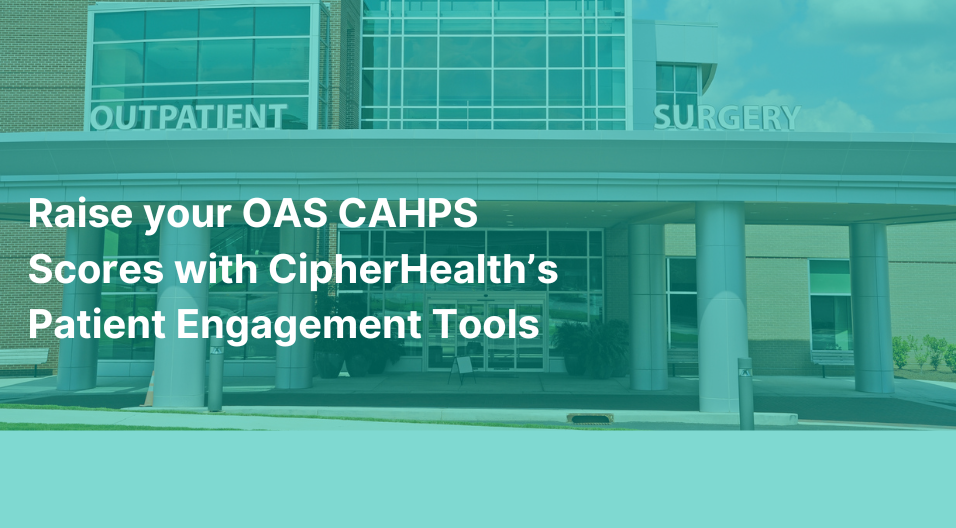As defined by the Centers for Medicare and Medicaid Services, the HCAHPS (Hospital Consumer Assessment of Healthcare Providers and Systems) Survey, also known as the CAHPS® Hospital Survey or Hospital CAHPS®, is a standardized survey instrument and data collection methodology that has been in use since 2006 to measure patients’ perspectives of hospital care.
Since its inception, the HCAHPS Survey has been the core measurement of patient satisfaction, dictating not just how patients perceive their care, but also the reimbursements that are tied to these scores. With the rise of value-based incentives, the HCAHPS Survey has become a top priority for hospitals and health systems. In this article, we will focus on the Transitions of Care HCAHPS domain and patient engagement strategies that directly impact this measure.
Taking a Closer Look at Transitions of Care
The Transitions of Care HCAHPS questions get to the heart of what patients want when they leave the hospital for another level of care – particularly home. There are three primary questions that encompass this domain:
- During this hospital stay, staff took my preferences and those of my family or caregiver into account in deciding what my healthcare needs would be when I left.
- When I left the hospital, I had a good understanding of the things I was responsible for in managing my health.
- When I left the hospital, I clearly understood the purpose for taking each of my medications.
These questions are based on the work of Eric Coleman, MD, MPH at the University of Colorado Health Sciences Center. He has developed the Transitions of Care Program with an intervention model composed of Four Pillars:
- Medication Self-Management: Patient is knowledgeable about medication and has a medication management system.
- Use of Dynamic Patient-Centered Records: Patient understand and utilizes the Personal Health Record to facilitate communication and ensure continuity of care plan across providers and settings.
- Primary Care and Specialist Follow-Up: Patient schedules and completes follow-up visit with the primary care physician or specialty care physician.
- Knowledge of Red Flags: Patient is knowledgeable about indications that their condition is worsening and how to respond.
There are strategies that organizations and individuals can leverage at each level of the patient’s care. To truly impact the Transitions of Care domain, it is imperative to focus on interventions both at the point of care and post-encounter since care transitions encompass multiple settings.
Prepare Patients for a Successful Care Transition
When patients are in the hospital, providers have the opportunity to ensure patients are ready for a successful transition to their next care setting. Even if patients are being discharged to another healthcare facility, hospitals are still responsible for ensuring they are prepared and have a clear understanding of what is to happen next.
Discharge or Transitions of Care rounds are a great way to ensure that patients know and understand their medications, as well as any other care instructions. The discharge round can incorporate tools such as the teach-back method or a checklist. It also provides a designated time to arrange follow-up appointments, as well as review red flags that the patient should be aware of. When done properly, these discharge or Transition of Care rounds become a planned event for both the patient and the staff, ensuring that all arrangements are made for safe transitions.
Ensure Patients Have a Safe Transition Post-Discharge
A second proven strategy is a post-encounter follow-up call, which provides a safety net for patients when they go home. Even with teach-back methods and other strategies, the discharge process can be overwhelming and difficult to remember. By providing an additional interaction following discharge, your organization can ask patients questions regarding their understanding and ability to obtain their medication, follow their plan of care, and any red flags that require clinical assessments. Depending on the goals of the program, these calls can be designed as either a one-touch quickly after discharge or a multi-touch program when patients are at high risk for readmissions.
The Impact of Effective Patient Engagement on Care Transitions
Rounding and post-discharge follow up form the two pillars of effective patient engagement, improving patient outcomes during their hospital stay and throughout their care journey. According to a recent analysis of three healthcare organizations, hospitals that performed discharged rounds saw a subsequent 28% reduction in patients reporting that they didn’t understand their discharge instructions. Helping patients feel more confident in their transition from one care setting to the next takes multiple coordinated interactions. By providing multiple opportunities to educate and address patient concerns, health systems can ensure that their patients are happy and on the path towards recovery.








